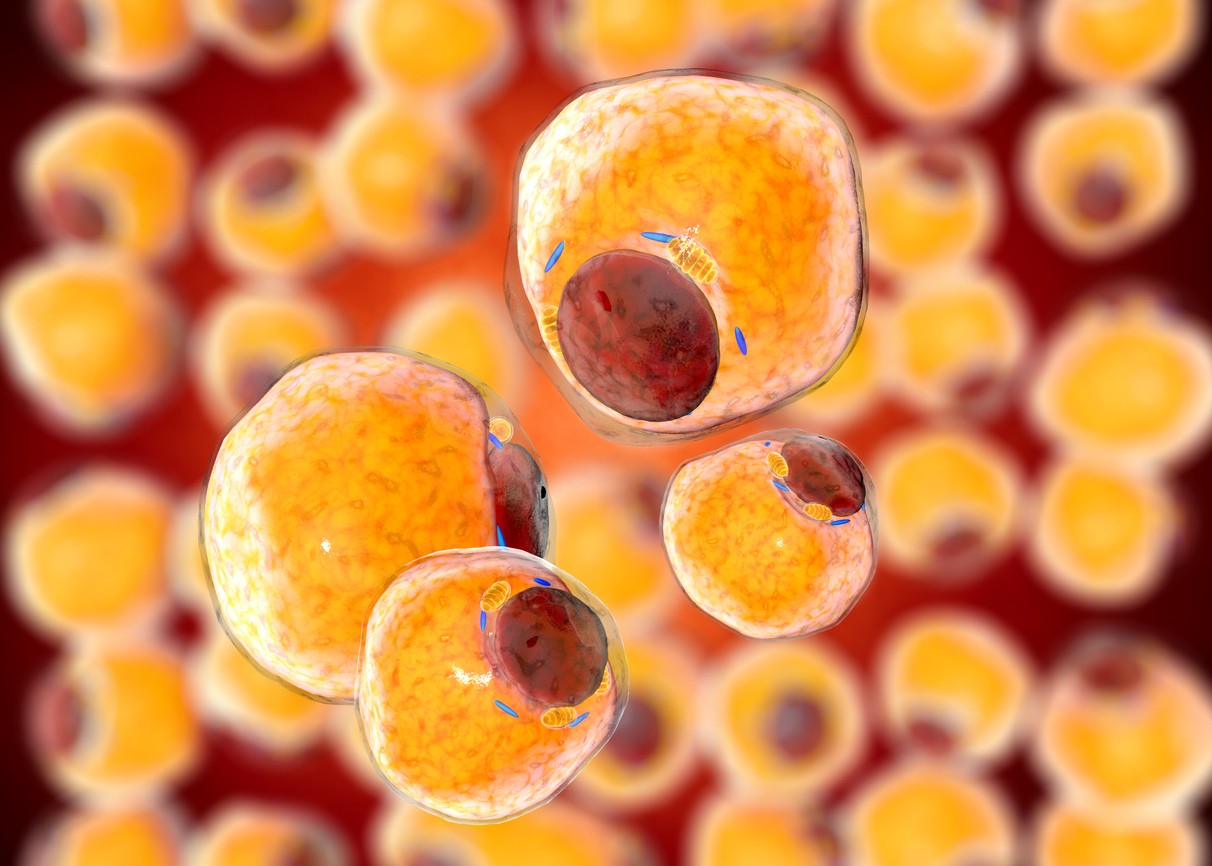The stereochemical structure of the molecule might allow it to bind to two cognate receptors (prohibitin and ANXA-2) found exclusively on blood vessels of white adipose tissues. High tissue specificity might prevent it from targeting brown fat tissues. Thus it may potentially not influence adaptive brown fat thermogenesis, which is crucial, especially for newborn organisms who can conserve only limited heat. The body surface area to volume ratio might promote high rates of heat loss in such cases.
Adipotide and Obesity
In 2008, epidemiological studies suggested that various conditions may be intricately linked to hypertension, hyperlipidemia, metabolic syndrome, NIDDM (Non-Insulin Dependent Diabetes Mellitus), cerebrovascular accidents, myocardial infarction, and cancers. Interestingly, morbidity might be determined by the distribution of adipose tissues within the organism. Abdominal fat might be more harmful in certain areas of placement due to higher lipolytic function. Adipose tissue comprises lipid storing adipocytes (cells) and vascular macrophages, and preadipocytes. An increase in adipose mass might be caused by excess lipid deposition in adipocytes leading to hypertrophy and subsequent hyperplasia. It might further trigger the infiltration of macrophages and conversion of preadipocytes to adipocytes. The blood supply might also promote this microenvironment. Adipotide has been suggested by researchers to target this blood supply, thereby causing irreversible ischemic injury and apoptosis of adipose tissues.
Selected Research Studies
In 2004 a study named “Reversal of obesity by targeted ablation of adipose tissue” by Mikhail G Kolonin et al. observed that targeted apoptosis in the vascular bed of white adipose tissue may potentially mitigate obesity. Obese mice exposed to a peptide sequence CKGGRAKDC binds to a multifunctional vascular membrane protein called prohibitin. It appeared to induce a decrease in adipose tissue mass and normalization of overall metabolic processes without any significant ancillary impact.
In 2011, research entitled “A Peptidomimetic Targeting White Fat Causes Weight Loss and Improved Insulin Resistance in Obese Monkeys” by Kirstin F. Barnhart et al. established the ligand-directed peptidomimetic named Adipotide (with sequence CKGGRAKDC-GG-D(KLAKLAK)2 ) as a prototype of anti-obesity peptides in obese monkeys. Adipotide was observed to induce apoptosis in the vasculature of white adipose tissue leading to rapid weight loss, improved insulin and renal function in the monkeys.
In 2011, Fernanda I. Staquicinia et al. analyzed vascular marker(s) for different organs in their work entitled “Vascular ligand-receptor mapping by direct combinatorial selection in cancer patients.” The survey included 2.35 × 106 motifs from a peptide library in research models of cancer, uncovering ligand-receptors specific to particular vascular beds. Among the four native ligand-receptors found, two appeared to be native ligand-receptors (cathepsin B/apolipoprotein E3 and integrin α4/annexin A4) that existed across tissues. The other two exhibited tissue-specific prevalence – prohibitin/annexin A2 exclusive for the white adipose tissue and RAGE/leukocyte proteinase-3 found in bone metastases. Thus prohibitin and ANXA-2 might be found to be receptors specific for vasculature of white fat tissue.
Disclaimer: The products mentioned are not intended for human or animal consumption. Research chemicals are intended solely for laboratory experimentation and/or in-vitro testing. Bodily introduction of any sort is strictly prohibited by law. All purchases are limited to licensed researchers and/or qualified professionals. All information shared in this article is for educational purposes only.






